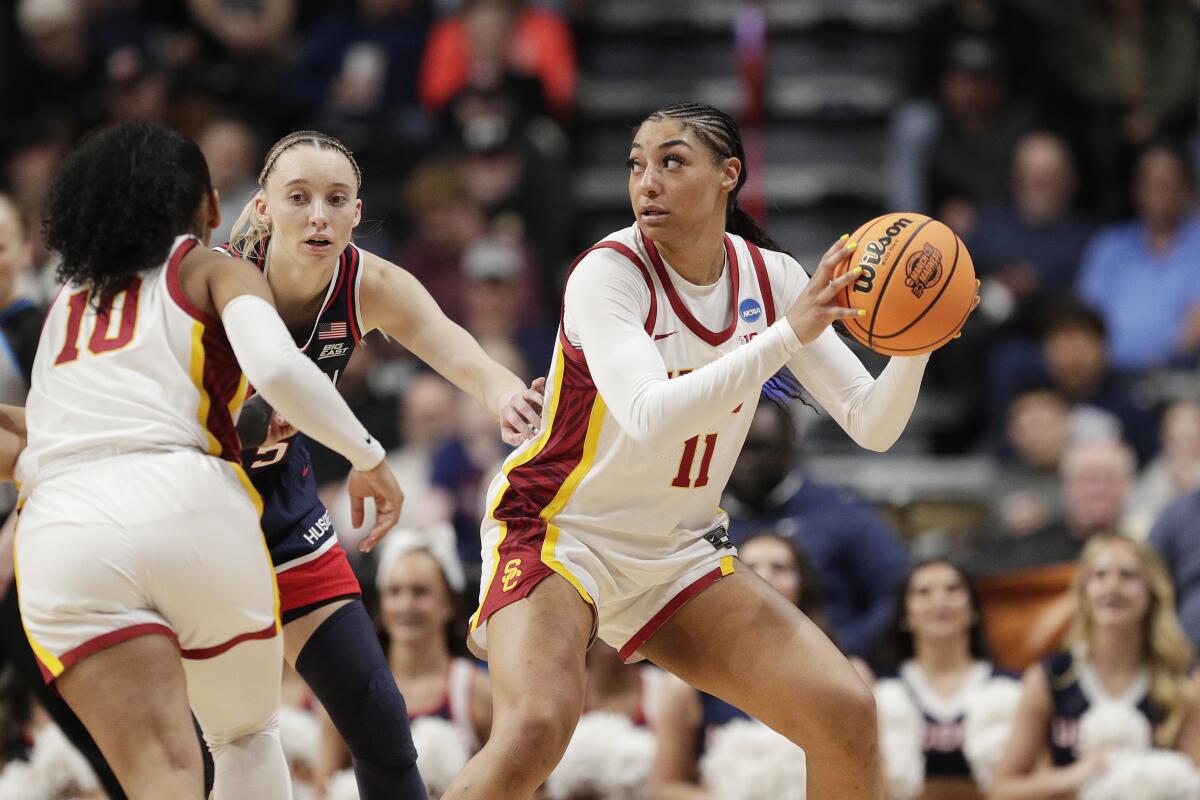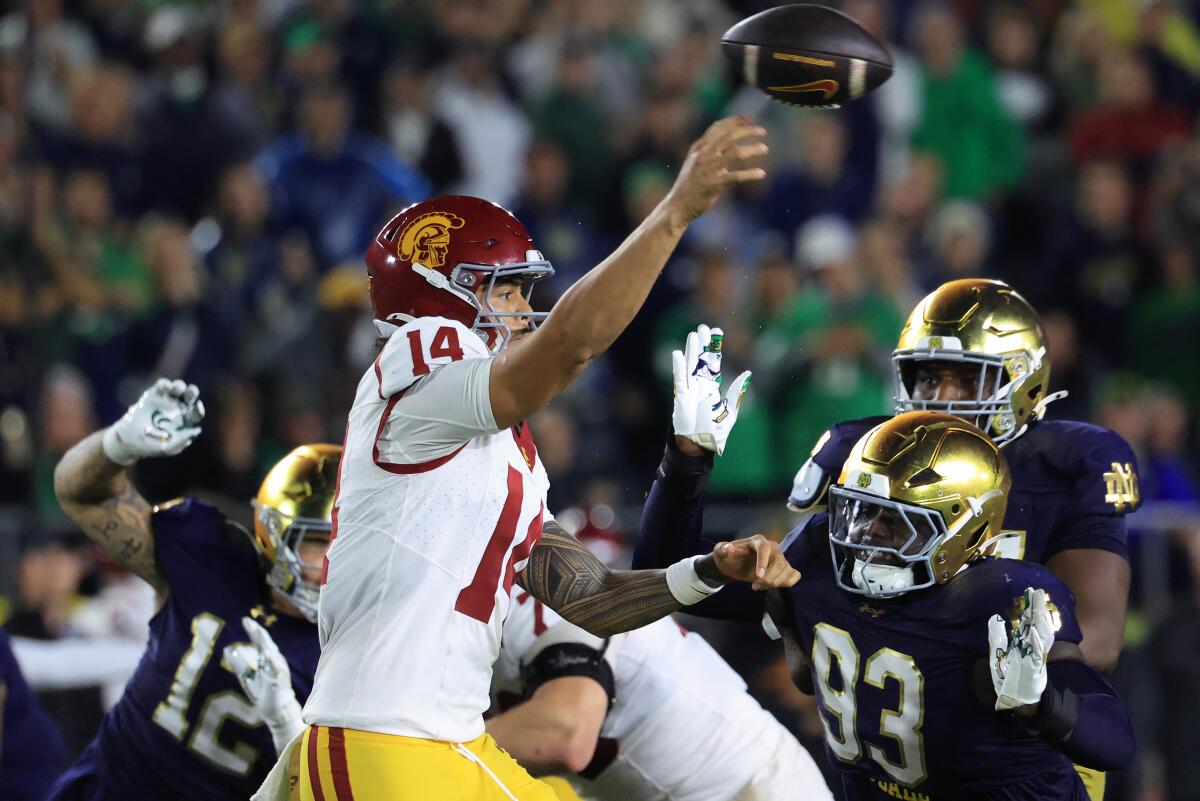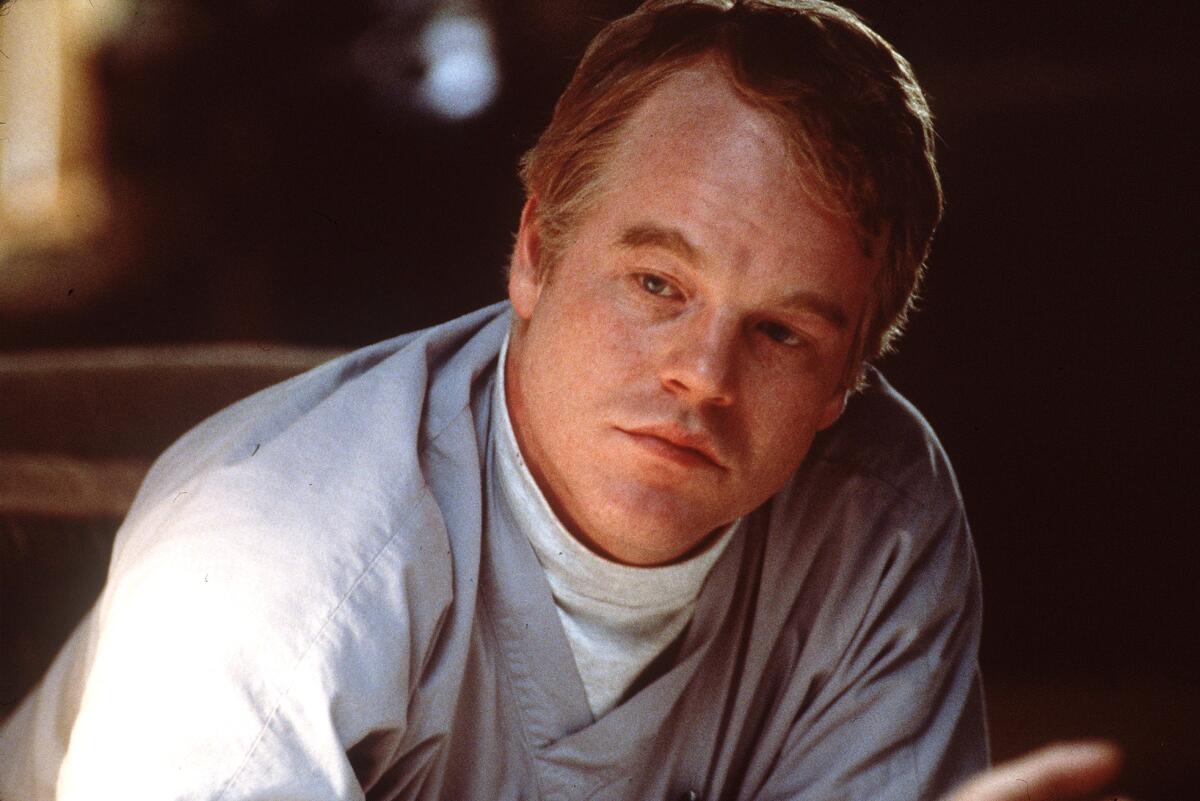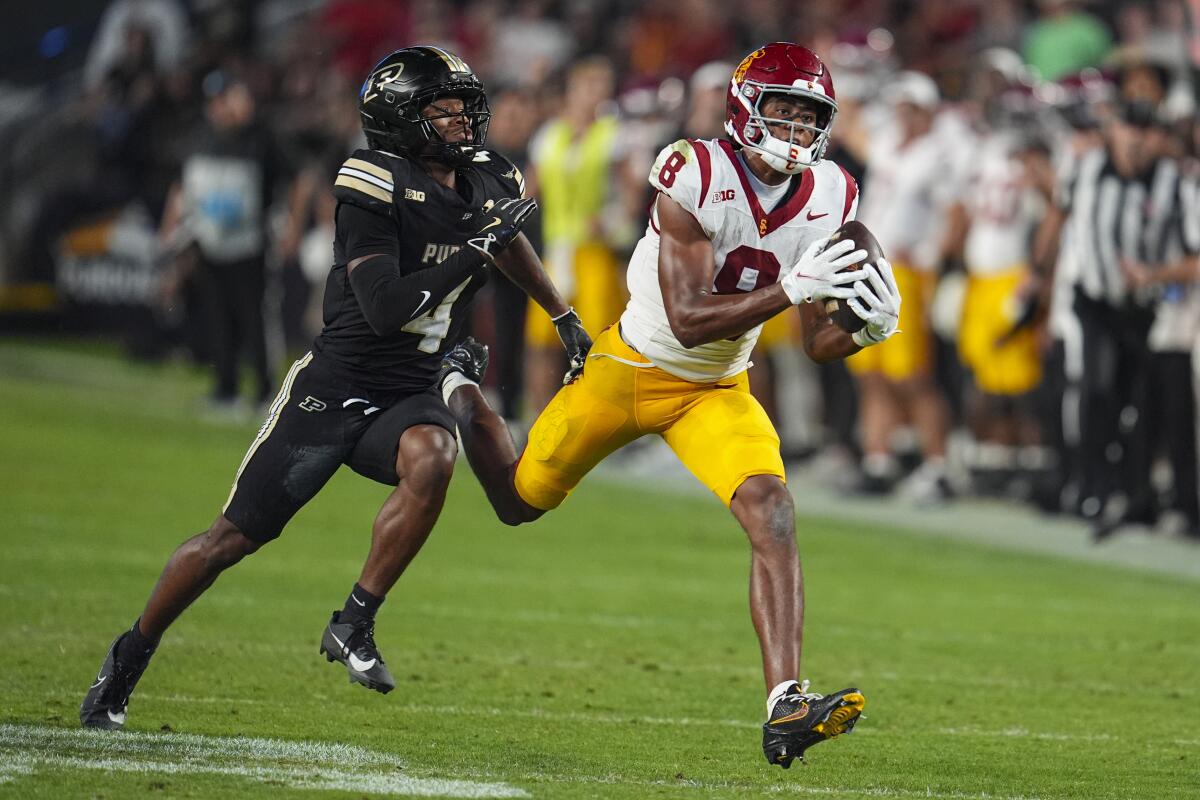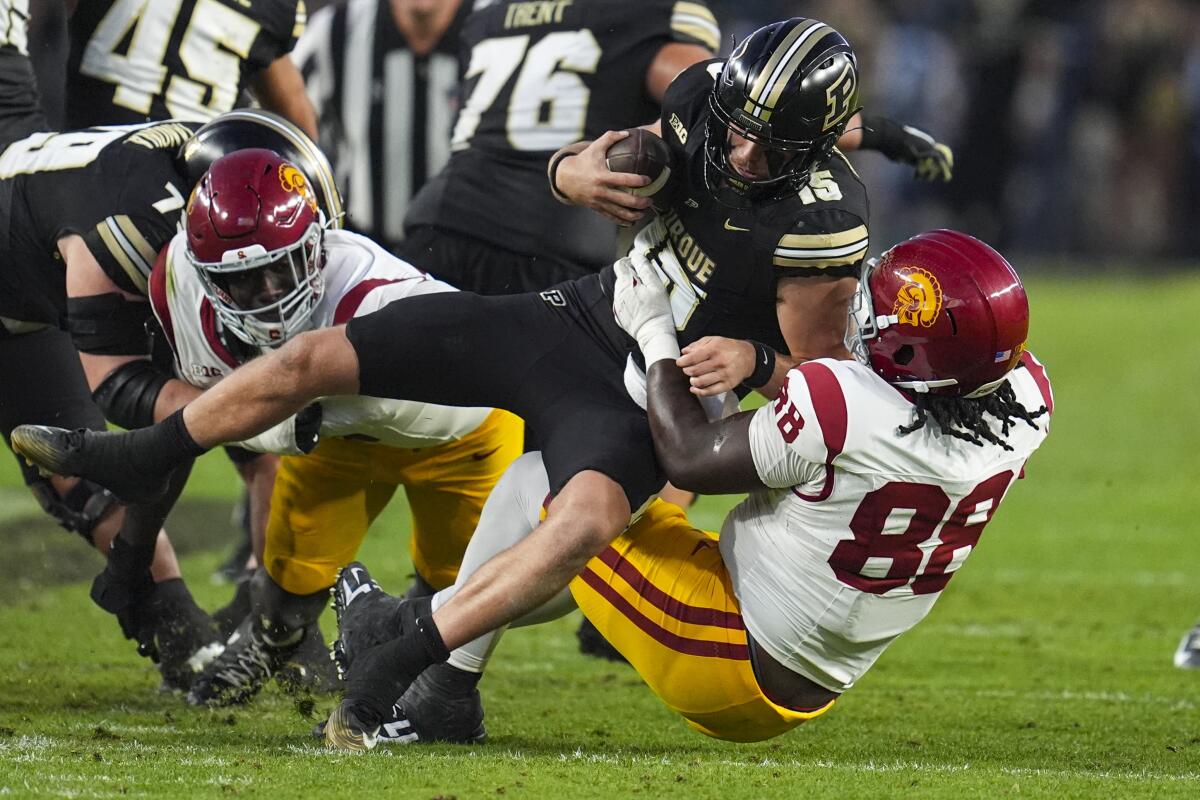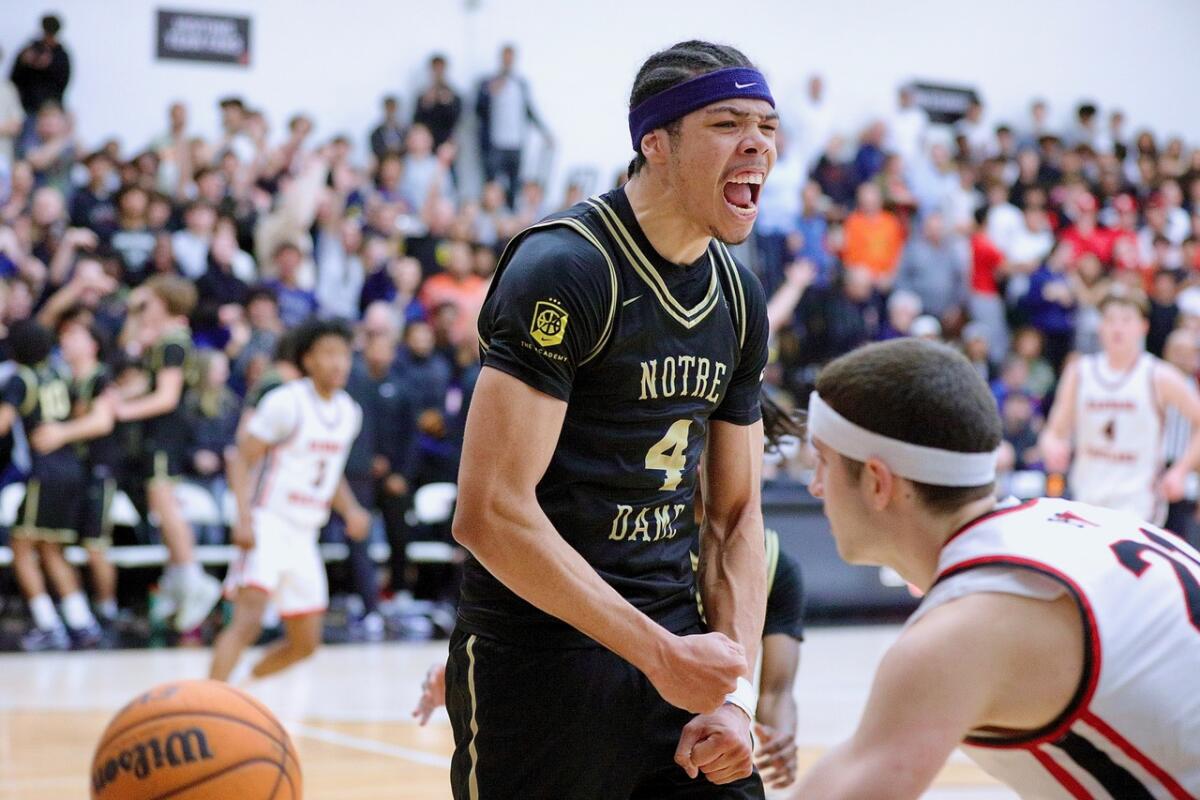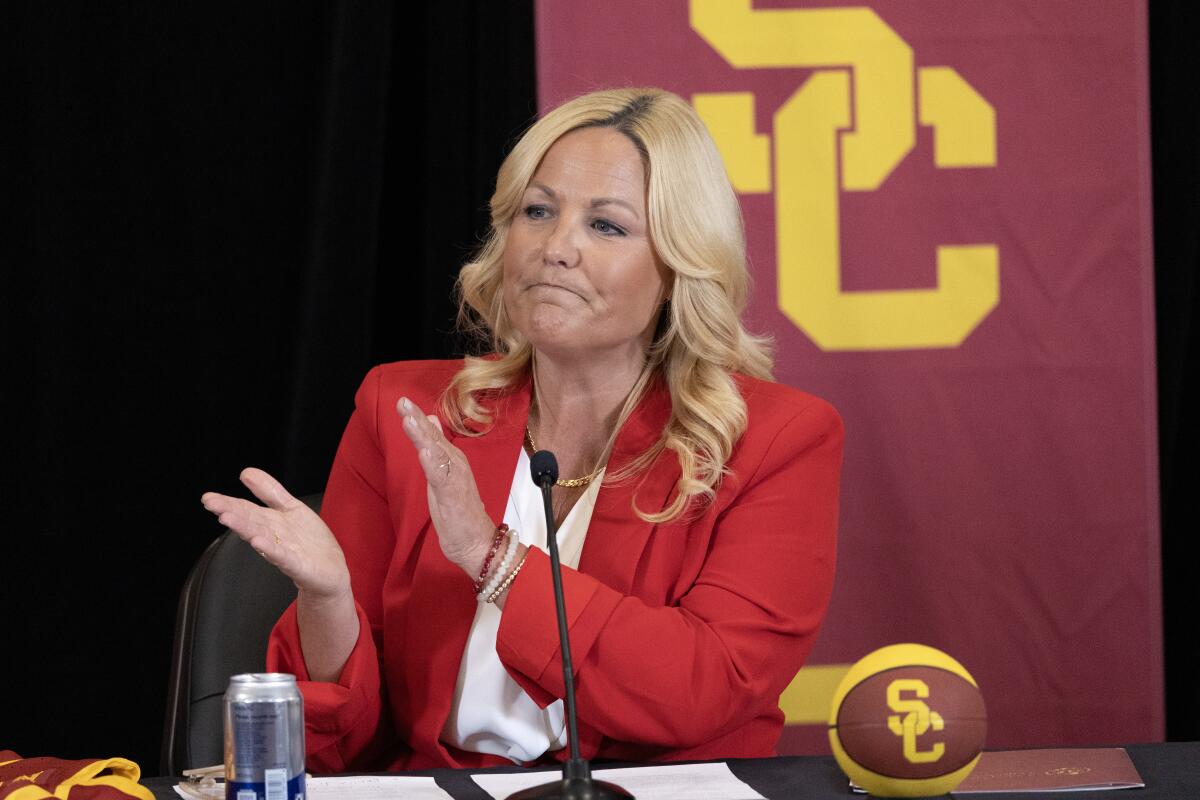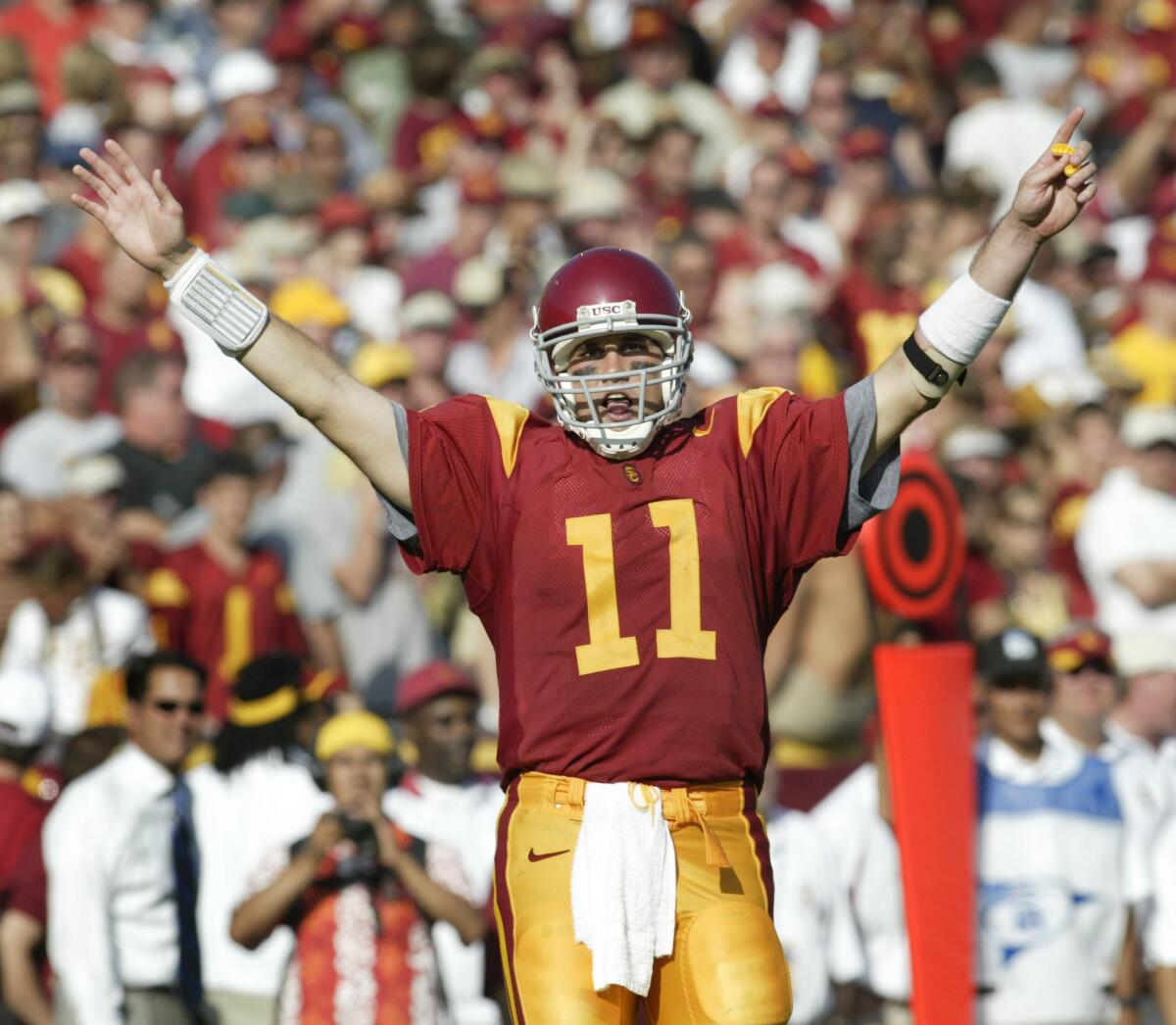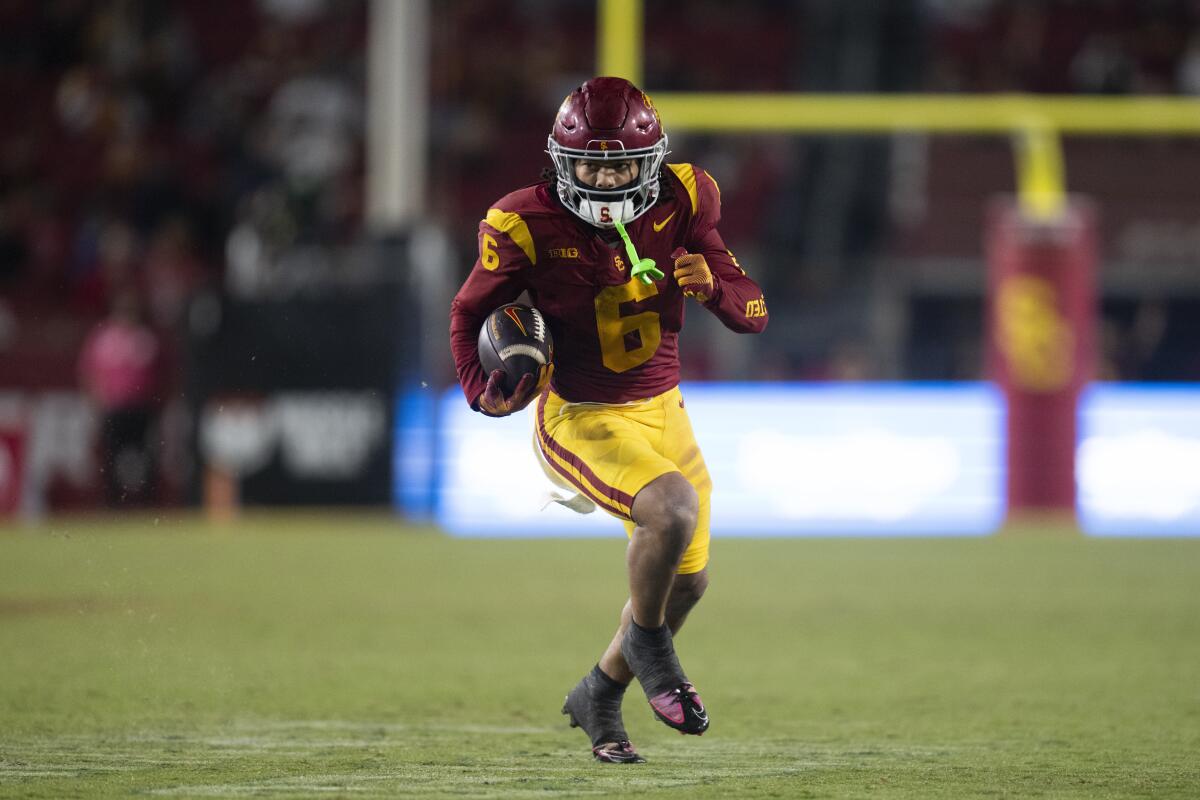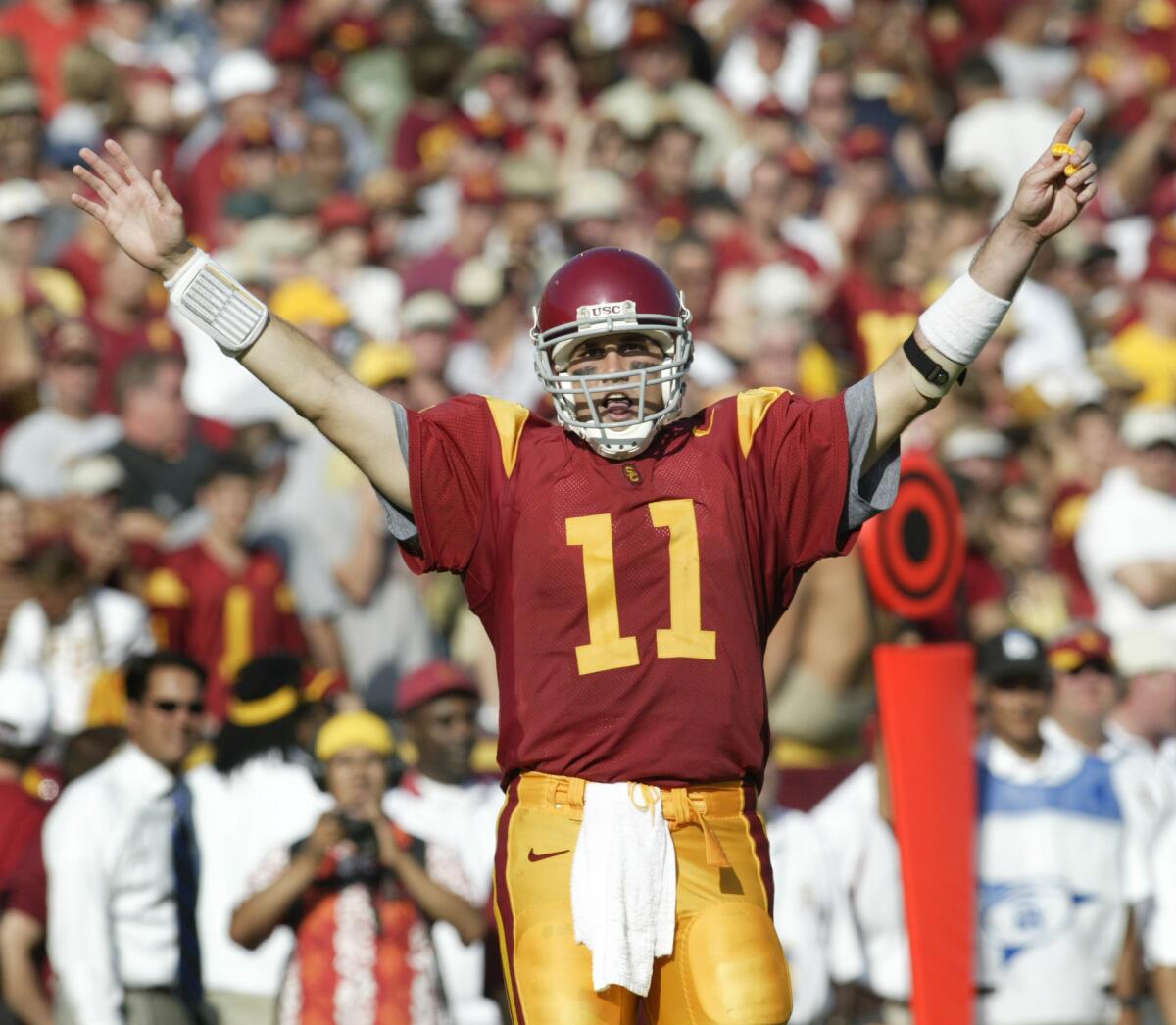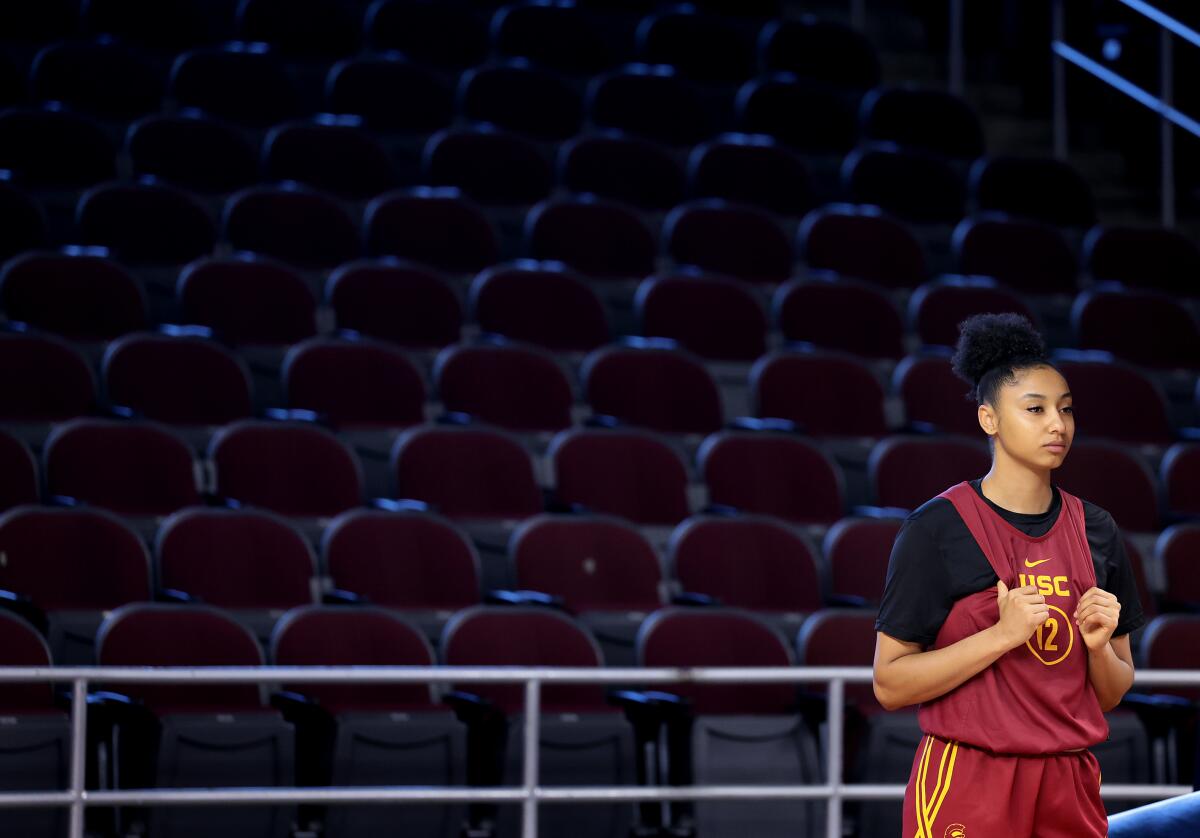Times of Troy: Three questions the men’s and women’s basketball teams must answer
Welcome back to the Times of Troy newsletter, where we’re still struggling with how to view USC’s 21-17 win at Nebraska. On one hand, USC gutted out a hard-earned road victory, just its second true road win outside of L.A. since 2023, with a stingy defensive stand in the second half. On the other, USC’s offense was out of sorts, its quarterback had the worst start of his tenure and its defense was run over for the third time in four games.
No matter your perspective, this much is indisputable: USC is 6-2, bowl eligible and in prime position to be 8-2 heading to Eugene in late November. Remember, the Trojans were 4-5 at this time last year.
But after flying back west for the final time this regular season, we’re going to take a brief break from football to alert you that college basketball season, believe it or not, is about to begin. And both of USC’s teams enter the season on fascinating and uncertain terms.
Let’s start first with the men’s team and Eric Musselman, who thought he’d have a five-star freshman to help springboard his program to relevance in Year 2. But the injury to Alijah Arenas has undoubtedly altered that trajectory. What we don’t know now is how much and for how long.
That’s just the beginning of the questions facing USC. Here are three others …
1. Who’s going to play point guard?
You may remember this same query from this time last season, when USC entrusted the role to Desmond Claude, who was a good playmaker, but not a great floor general. He turned the ball over nearly four times per game.
Arenas was expected to be the primary ballhandler. But with him out, it’ll be some combination of Rodney Rice, Chad Baker-Mazara, Jordan Marsh and Jerry Easter sharing ballhandling duties. None have any extensive experience as a floor general. Marsh has been a pleasant surprise in practice, but was more of a pure scorer at North Carolina Asheville.
Rice will have a lot on his shoulders already. And that’s not considering his actual shoulder, which has held him out for much of the preseason. He’ll need someone else to step up to help.
2. How much better is USC’s frontcourt?
When USC played its two exhibition games last month, opposing coaches couldn’t believe how much 7-foot-5 center Gabe Dynes affected the game defensively. Dynes was arguably USC’s best player in the preseason, and he wasn’t even expected to start in the Trojans’ frontcourt.
He had six blocks in his debut and should help give USC improved rim protection this season. Which is to say any rim protection at all.
The staff has been high on Jacob Cofie since he arrived on campus. Don’t be surprised if he ascends to a major role. Ezra Ausar, at 253 pounds, should be a beast on the boards, and Jaden Brownell should give USC’s frontcourt range out to the arc. This group has a lot of varied skillsets, and that should put the defense especially in a much better position.
3. Can USC score enough?
When asked what he learned most from his team during the preseason, Musselman didn’t mince words.
“We’ve got to figure out a way to score better,” he said.
Arenas, again, was supposed to lead the way in that regard. Rice was more of a secondary scorer at Maryland, as was Baker-Mazara at Auburn. USC looks, as of now, like a whole team of complementary offensive players, with no alpha yet. That can change. Maybe Cofie steps into the spot before season’s end. But it’s definitely something to monitor through the non-conference season.
What about the women’s team?
Kennedy Smith controls the ball while pressured by UConn guard Paige Bueckers during last season’s NCAA women’s tournament.
(Young Kwak / Associated Press)
USC enters this season with far lower expectations than this time last year, on account of JuJu Watkins’ knee injury, which will keep her out until next season. So what can we expect from Lindsay Gottlieb’s Trojans?
Here are the three big questions facing the USC women this season …
1. How can USC fill the void without Watkins?
This is the only question that really matters. Problem is there’s no clear answer. Gottlieb has been clear that no one player will replace Watkins, as tempting as it may be to slot top prospect Jazzy Davidson into that spot.
It’s more reasonable to recreate Watkins’ production in the aggregate. But that won’t be easy when you consider how much other production the Trojans lost from last season, in addition to Watkins. USC must replace 88% of its scoring and 80% of their rebounding output, and while that’s not that unique in the era of the transfer portal, it does mean the team is likely to have a very different identity.
Gottlieb has said that USC is going to play with more pace this season. But who will it turn to when it needs a bucket? Davidson is perhaps the likeliest candidate, but I’m particularly curious to see the development of sophomore Kennedy Smith. Smith was inconsistent offensively as a freshman. But Gottlieb plans to put the ball in her hands more, and how that works out will say a lot about the direction of the season.
2. What’s going on in the frontcourt?
Last season, there was no question who USC could count on down low. Rayah Marshall was a three-year starter, while Kiki Iriafen is now one of the best young bigs in the WNBA.
But with both gone, USC doesn’t have any proven options to step into their place. Gottlieb has said that USC will use a by-committee approach with transfer Yakiya Milton, Lithuanian import Gerda Raulusaityte and returners Vivian Iwuchukwu and Laura Williams. Of those four, only Milton was part of a college basketball rotation last season, and she only averaged two points per game in 11 minutes at Auburn.
Raulusaityte is the big unknown. One of the youngest members of the Lithuanian national team, USC kind of needs her to be an immediate contributor. Especially with her ability to stretch the floor as a shooter, something the other three don’t do. If she struggles, USC could be in trouble with its lack of talent down low.
3. How good will Davidson be right away?
Watkins is a tough act to follow as a top-rated freshman. But Davidson has the potential to be a stat-stuffing star right away.
I don’t know if she’ll score quite like Watkins, who shot 42% and scored 24 points per night as a freshman. What she will do, perhaps even more than Watkins, is elevate the games of teammates around her. You can read more about that in an upcoming story on Davidson.
But can she get a bucket when USC needs one? And can she force her way through traffic with her spindly frame? There are still questions to be answered. But while Gottlieb is doing her best to temper expectations, I think USC is going to need its star freshman to be a star right away, if it has any hope of competing in the Big Ten like it did last season.
—Jayden Maiava didn’t have it as a passer. So he used his legs. And that worked wonders. Maiava was a meager nine of 23 through the air for 135 yards, but he reminded the world that he’s a capable runner, too, as he rushed for 62 yards in 11 carries. The highlight of his day came in the third quarter, when Maiava took off on consecutive plays for a pair of 16-yard gains, the second of which saw him stiff-arm his way to a score. Maiava hasn’t looked to run much this season. But maybe he should consider doing it more.
—USC’s three most influential players Saturday were all walk-ons. Running back King Miller was USC’s only consistent source of offense. Kaylon Miller, his brother, stepped in for an injured Alani Noa and was arguably USC’s best lineman in the ground game. And USC kicker Ryon Sayeri continued to shine by knocking through two more field goals. I’m not sure what that says about USC’s team. But it’s not something you see every day.
—The offensive line just can’t stay healthy. Left tackle Elijah Paige returned after missing the previous three games, only for Noa to go down. Noa never returned, and we won’t know more about his status until at least Monday. USC is getting especially thin on the interior, with guard Micah Banuelos having also missed Saturday’s game. Center Kilian O’Connor should be back soon, but it’s a wonder that USC has held it together up front while being ravaged by injuries.
Olympic sports spotlight
After losing three of four to start their Big Ten slate, the women’s volleyball team’s tough start to the Big Ten slate is now firmly in the rearview. The Trojans have won six in a row. Among Big Ten teams, only Nebraska, which is 21-0 and No. 1 in the nation, has an active win streak that’s longer.
USC should win its next two before welcoming the Huskers to Galen Center for an epic match on Nov. 16.
In case you missed it
No. 23 USC uses late surge to win at Nebraska and keep playoff hopes alive
‘We still control our destiny.’ USC focused on rebounding after ugly Notre Dame loss
What I’m watching this week
IT: Welcome to Derry
(HBO)
I’ve written in this space before about my love of all things Stephen King. I’m also well aware of the less-than-stellar track record of adapting his books into television and movies.
I’m not sure just yet where “IT: Welcome to Derry” falls on that spectrum. Only the first two episodes of the spinoff prequel to “It” are currently available on HBO Max, and while Derry remains as creepy and tense as ever, I worry a bit about where the story is headed. All that said, my favorite part of the original book was the character building with the town’s kids. So far, that part remains intact.
Until next time …
That concludes today’s newsletter. If you have any feedback, ideas for improvement or things you’d like to see, email me at [email protected], and follow me on X at @Ryan_Kartje. To get this newsletter in your inbox, click here.
